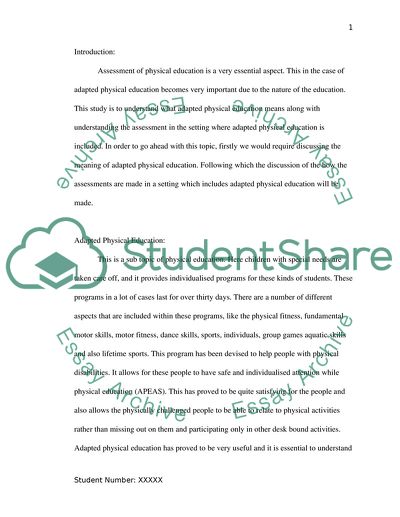Cite this document
(A Clear Understanding of the Adapted Physical Education Research Paper, n.d.)
A Clear Understanding of the Adapted Physical Education Research Paper. Retrieved from https://studentshare.org/sports-and-recreation/1721121-assessment-in-the-inclusion-setting-adapted-physical-education
A Clear Understanding of the Adapted Physical Education Research Paper. Retrieved from https://studentshare.org/sports-and-recreation/1721121-assessment-in-the-inclusion-setting-adapted-physical-education
(A Clear Understanding of the Adapted Physical Education Research Paper)
A Clear Understanding of the Adapted Physical Education Research Paper. https://studentshare.org/sports-and-recreation/1721121-assessment-in-the-inclusion-setting-adapted-physical-education.
A Clear Understanding of the Adapted Physical Education Research Paper. https://studentshare.org/sports-and-recreation/1721121-assessment-in-the-inclusion-setting-adapted-physical-education.
“A Clear Understanding of the Adapted Physical Education Research Paper”, n.d. https://studentshare.org/sports-and-recreation/1721121-assessment-in-the-inclusion-setting-adapted-physical-education.


